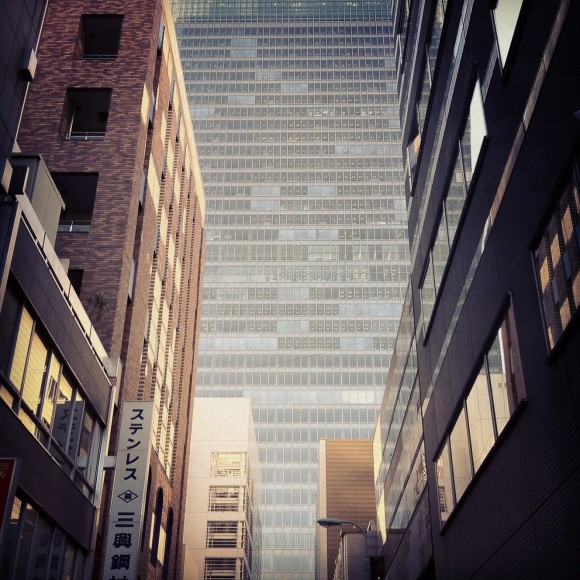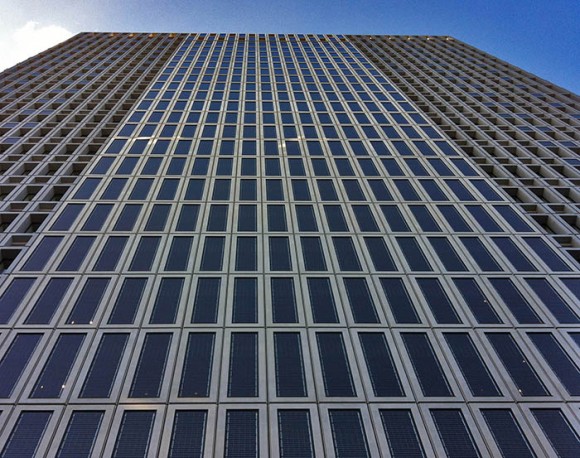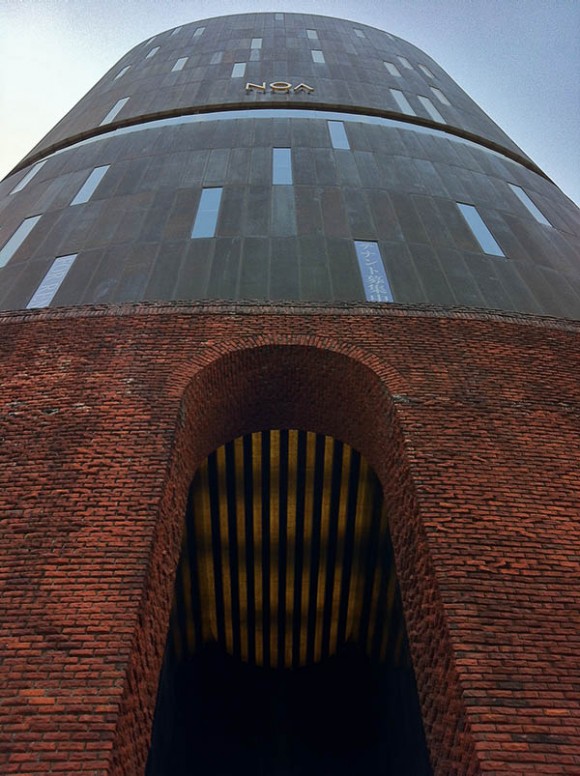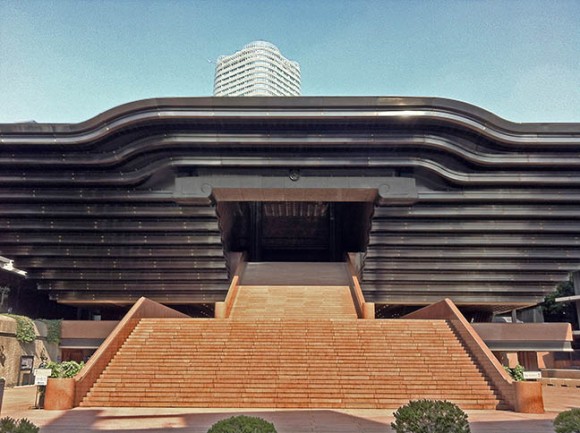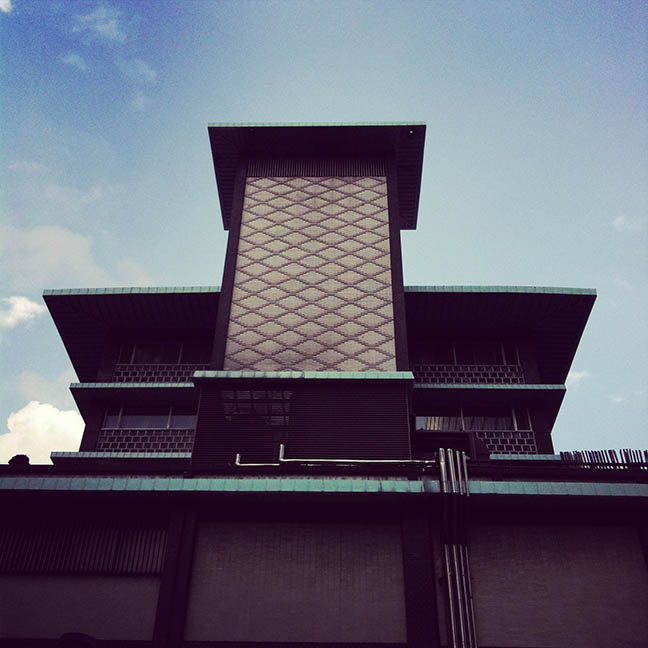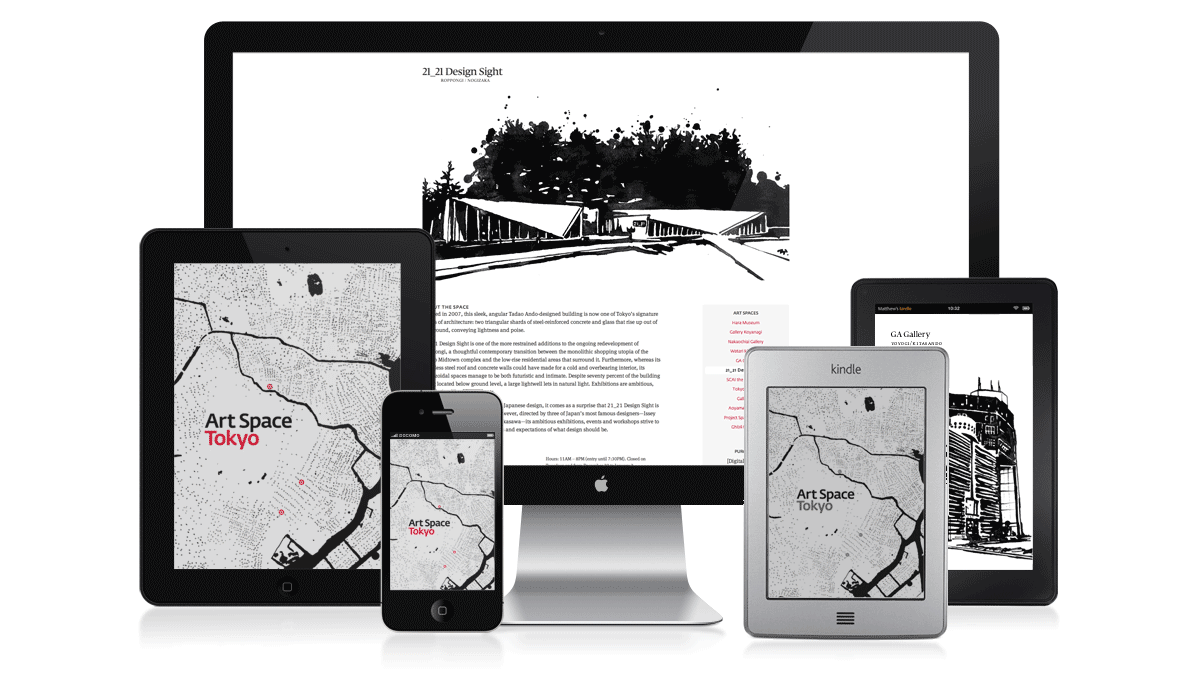Somewhere in Nihonbashi:
Category Archives: Japan
Shimizu headquarters
I’ve been walking quite a bit through town today. A fairly nondescript skyscraper / office building caught my eye, mainly because there was a delegation of suit-wearing business folk outside looking at the building inquisitively. A quick search and I found out it’s the brand-new Shimizu headquarters. Apparently the most eco-friendly office building in the world.
NOA building
Though his was hardly a household name, ask nearly any practicing architect of any age in Japan about Seiichi Shirai (1905-83), and the response is consistently one of admiration, if not reverence. An ardent philosopher, poet, and calligraphist whose life spanned an age of ever-increasing industrialization, Shirai the architect holds a special place in the hearts of designers today for the markedly individual and spiritual stance that informed his many works.
Susan Rogers Chikuba, taken from here
Just up the road from the Reiyukai temple is the NOA building, another architectural gem in Tokyo’s Azabu district, built in 1974. The 15-storey building consists of a red-brick pedestal of about 8 meters height and a steel-covered and sculpture-like upper part that is dotted with very few windows (although the 8th or 9th floor has a full-length one). The building’s architect, Seiichi Shirai, studied architecture and philosophy in the Berlin of the Weimar years. His most famous design has never been built.
Reiyūkai temple
I first saw this building in passing, at night. A few days later I caught another sight. It looks like a spaceship that has fallen from the sky into downtown Tokyo. I wanted to find out a bit more and visited the Reiyukai Inner Trip temple last week. A very interesting experience, both architecturally and… well, spiritually.
Yasukuni Shrine
After strolling around and visiting the Museum of Modern Art Tokyo today, I took a rather long-winded walk towards Ichigaya Station to catch the Nambuko Line home. This took me past the infamous Yasukuni Shrine. It was already late and dark, so I didn’t stick around for too long (although the sight of the shrine is beautiful at that time of the day).
The shrine is devoted to soldiers who have died fighting for the Emperor. More than two million souls are remembered here, among which there are also some war criminals. I have come across the shrine frequently recently (e.g. the LDP leader and former PM Shinzo Abe paid a visit to the place last week) and it made me think again of one of my “assignments” while here: How is the wartime remembered in Japan? How is the collective memory embedded in education and popular culture?
Hotel Okura
With its high ceiling and muted lighting, the capacious lobby of the Hotel Okura’s main building seemed like a huge, stylish cave. Against the cave walls, like the sighing of a disemboweled animal, bounced the muted conversations of people seated on the lobby’s sofas. The floor’s thick, soft carpeting could have been primeval moss on a far northern island. It absorbed the sound of footsteps into its endless span of accumulated time. – Haruki Murakami – 1Q84
This must be my favourite building in Tokyo so far. This large hotel was built for the 1964 Tokyo Summer Olympics and opened to the public two years before in 1962. Nested between the skyscrapers of Roppongi, it is quite striking how you first walk past the place and don’t recognise it all too much (probably because it isn’t very high). Upon closer inspection though, the place unfolds its uniqueness – a very functional and modern Eastern building with Western specifications.
Engaging with the Tokyo art scene
As any megalopolis, Tokyo is brimming with art galleries, museums and other cultural institutions. After seeing a few of them, and also after engaging a little more with Japanese history and culture, I have set myself a task for the next few months, an assignment of sorts: How do Japanese people express themselves through the arts? How are emotions channeled, how is social criticism conveyed? These are big questions, but then again, I have quite some time on my hands to find some answers for myself. A few ideas: Continue reading
Art Space Tokyo
Having myself co-published a non-standard book with a crowd element to it, I was intrigued to find out about Art Space Tokyo, a collaboration between journalist Ashley Rawlings and publisher/designer Craig Mod. They started off in 2008 by publishing a hard-copy book on Tokyo’s art scene, taking the reader through reviews of galleries as well as accompanying neighbourhood tours.
Then in 2010, they funded their second edition via Kickstarter, raising about $25k. Next, the digital edition came out in 2012 and is very interesting. Mostly for me because it makes all content from the book available for free. All reviews, essays and interviews can be read from the comfort of your chair at home as well as on-the-go, using fully responsive technology for your reading pleasure on mobile devices.
